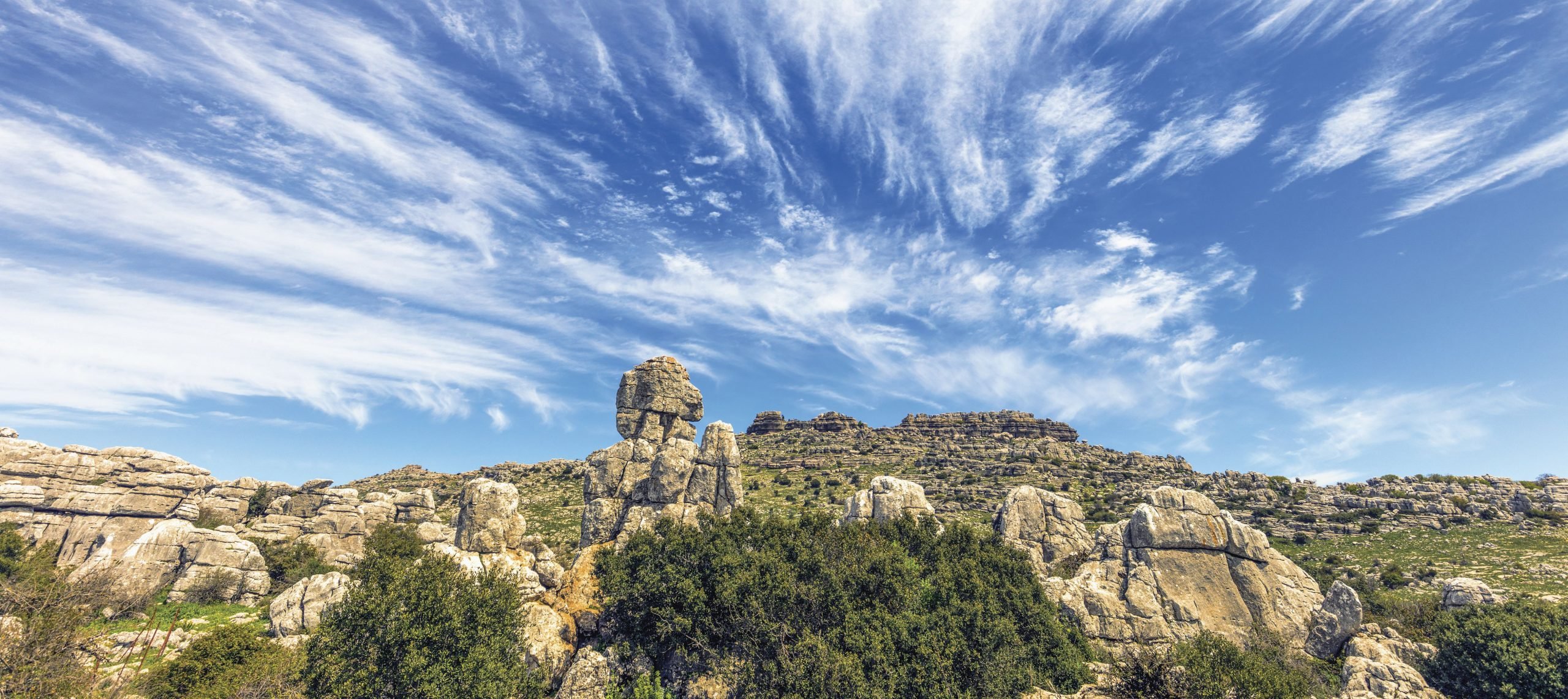
It might look rather unassuming at first, but the Dolmen of Menga in Antequera, Spain is actually Europe’s largest megalith. Thousands of dolmens, or ancient stone tombs, abound across the continent and beyond, from Africa to Asia. However, the shocking weight of the stones comprising this particular dolmen, or portal tomb, poses a longstanding puzzle.
Like many of its peers, the Dolmen of Menga is built into a hill. This burial site’s forecourt, which is equipped with a metal gate today, provides access to an ancient stone passageway that opens on an ovular burial chamber. Stone pillars punctuate the space, and supporting its stone ceiling. In full, the Dolmen of Menga measures 90 feet long, 20 feet wide, and 11 feet tall. It’s built from 32 massive rocks, weighing 441,000 pounds altogether.
Dolmen de Menga in Antequecha, Spain. Photo: Eckertz-Popp/ullstein bild via Getty Images.
The Dolmen of Menga dates to 3,800–3,600 B.C.E., during the Copper Age. Little is known of its prehistoric builders today, except that they were adept engineers
In 2016, UNESCO deemed the Antequera Dolmens complex encompassing the Dolmen of Menga a World Heritage Site. Two additional dolmens, Viera and El Romeral, round out the scene, as well as two natural mountains: El Torcal, and La Peña de los Enamorados. The Dolmen of Menga’s northeast-facing entryway notably frames the latter, which is named after an ancient local legend of forbidden love. That same entryway also “just happens” to perfectly catch the light of the sunrise during the summer solstice.
Tourists outside the Dolmen of Menga. (Photo by: Education Images/Universal Images Group via Getty Images)
Archaeologists studied the Dolmen of Menga for the first time in the 19th century. Upon cracking its chamber open, they found hundreds of skeletons. Numerous mysteries around the site are still coming to light. Until recently, academics couldn’t fathom that prehistoric people used astronomy while designing monuments. This generation of academics is turning that tide.
In 2013, Spanish researchers released the first internationally published study on the Dolmen of Menga. In it, they outlined their unprecedented geological study into the site’s rocks, then combined those results with analysis from their accompanying geometric design survey. Their efforts determined that the dolmen’s ability to capture the solstice sunrise deep within its chambers—even though it doesn’t face east—was no accident, but entirely intentional.
Still, experts remain vexed about how prehistoric people transported such stones. Last December, José Antonio Lozano Rodriguez, who spearheaded the 2013 study, published another report with an even larger group of Spanish academics. Together, they examined the Dolmen of Menga and found that it was built from sedimentary rocks quarried from an outcropping about half a mile away. Transporting such fragile materials so far would have taken serious know-how. What’s more, they also realized the dolmen’s outer stones are arranged in an interlocking fashion to channel water away, and prevent erosion.
Inside the Dolmen of Menga. Photo: Education Images/Universal Images Group via Getty Images.
This August, Lozano Rodriguez and members of his 2023 team published another study exploring how the Dolmen of Menga was built. They posit that prehistoric people transported the quarried stones using rope-controlled sledges on wooden tracks. On site, they likely used using counterweights to wedge the megaliths into deep socket foundations they’d dug in the hill’s bedrock, even angling the vertical stones to reduce the roof’s required size. In its study, the team marvels that the Doleman of Megna’s builders accounted for all these details and more, with immense precision.
Thus, Lozano Rodriguez and wider academic community remain on the trail. In the meantime, the Dolmen of Menga remains a popular, accessible attraction. Parking, access to its museum, and a contemplative moment in its tomb are all free.
Sometimes, archaeology gets big. In Huge! we delve deep into the world’s largest, towering, most epic monuments. Who built them? How did they get there? Why so big?